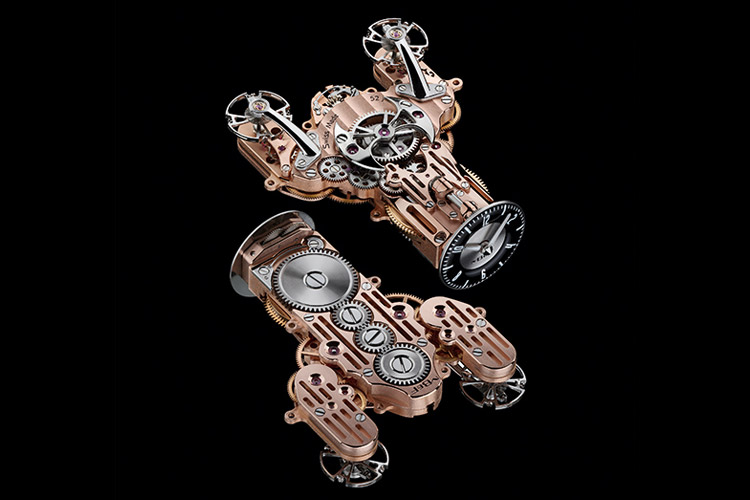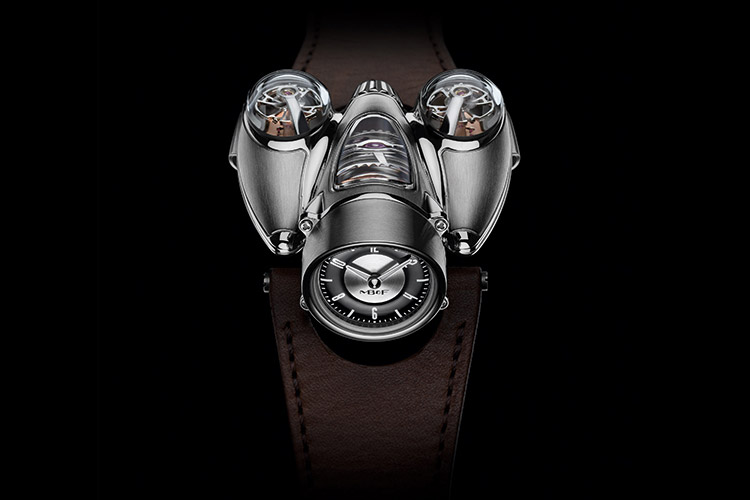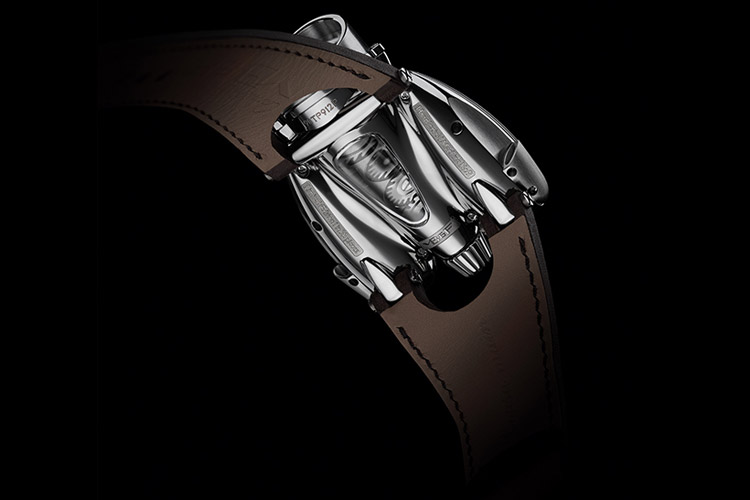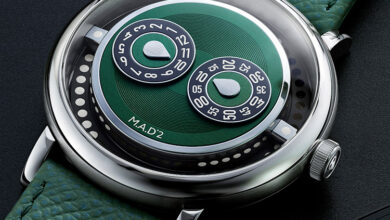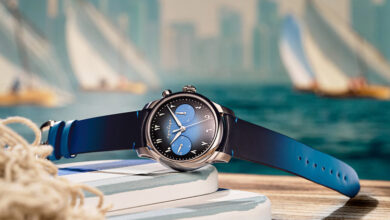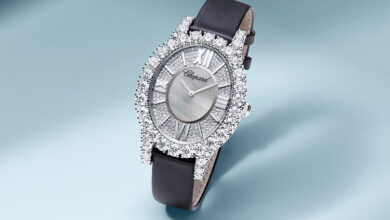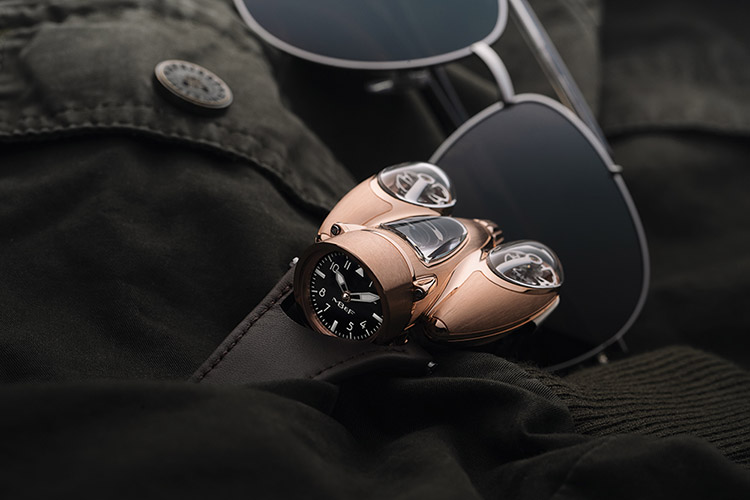
Haute horlogerie marque MB&F is back with new limited editions of Horological Machine N°9 ‘Flow’, inspired by the dynamic profiles of automotive and aviation mid-century design. HM9 Flow is declined in two versions, drawing their inspiration from the two main sources: A “Road” version with a speedometer-style dial; an “Air” version with an aviator-style dial
Reminiscent of a jet engine, a highly complex case in alternating polished and satin finishes encloses an equally complex manual winding movement, developed fully in house. Independent twin balance wheels beat at a leisurely 2.5Hz (18,000bph) on each flank of Horological Machine N°9, visible under elongated domes of sapphire crystal. A third pane of sapphire crystal on the central body reveals the gearbox of the HM9 engine: a planetary differential that averages the output of both balance wheels to provide one stable reading of the time.
Sitting perpendicular to the rest of the HM9 engine is the dial indicating hours and minutes, driven by conical gears that ensure precise engagement even when motion is put through a 90° planar translation. The winding-and-setting crown is located on the rear of the central body, its deep fluting providing ergonomic grip as well as aesthetic coherence with the overall design. Two satin-finished air scoops are mounted alongside the pods containing the oscillating balance wheels, evoking the raised vents that allow continuous airflow to high-performance motor engines.
The Horological Machine N°9 ‘Flow’ was launched in 2018 in two limited titanium editions of 33 pieces each: the “Air” version with darkened movement; the “Road” version with pink gold treated movement. In 2019, MB&F presents two new limited editions in 5N+ red gold with 18 pieces each: the “Air” version with blackened movement and rhodium-plated balance wheels; the “Road” version with rhodium-plated movement and red gold balance wheels.
A lifetime car aficionado, MB&F founder Maximilian Büsser first channelled the visual cues of the mid-20th century in the 2014 HM6 Space Pirate, particularly in its “Streamliner” SV editions. Now, MB&F goes even further and presents one of its most ambitious designs yet. Horological Machine N°9 ‘Flow’ is audacious in its design, and HM9’s unconventional form has rejected all limits. Its extreme curves and acute angles required new manufacturing standards and techniques to obtain a complete milled and finished case.
When the MB&F team first brought the HM9 designs to their manufacturing partners, the response was quick and unambiguous: these designs could not be realised. Other cases, such as the undulating shell of the HM6 Space Pirate, were geometrically complex, but their maximum height differential (the vertical distance between contiguous points) remained within 5mm. With HM9, that differential doubled, creating radical curves that give the case its highly tactile presence.
Because of the proportions of the curves on the HM9 case, it was essential to control the overall size. HM9 measures 57mm at its widest point and requires a highly compact yet robust engine. The wide-to-narrow alternating arrangement of the three primary volumes of the HM9 case made it impossible to install the movement by conventional means, within a case with limited transverse symmetry. It was necessary to divide the case along two axes and devise an unprecedented three-dimensional gasket for water resistance. This patented innovation is completely novel in its execution throughout the watchmaking industry.
The result of three years of development, the HM9 engine was created entirely in-house, with the accumulated experience that came with MB&F’s 13 years in existence (in 2018) and previous 14 different movements. The HM 9’s double-balance with differential is descended from the similar system in Legacy Machine N°2, albeit in vastly different aesthetic form. Whereas LM2 emphasised design purity and the hallucinatory effect of its suspended oscillators, HM9 is exultant in its celebration of expressive design.
The twin balance wheels of the HM9 engine feed two sets of chronometric data to a central differential for an averaged reading. The balances are individually impulsed and spatially separated to ensure that they beat at their own independent cadences of 2.5Hz (18,000bph) each. This is important to ensure a meaningful average, just as how a statistically robust mathematical average should be derived from discrete points of information.
Two balances beating within the same movement will inevitably bring up discussions of resonance, the mechanical phenomenon that describes linked oscillators in a state of mutual harmonic excitation. As with the LM2 engine, HM9 deliberately avoids inducing the resonance effect. Its purpose in including two balance wheels is to obtain discrete sets of chronometric data that can be translated by a differential to produce one stable averaged reading. This purpose would be defeated by two balances oscillating perfectly in phase, giving the same chronometric data at every point.

